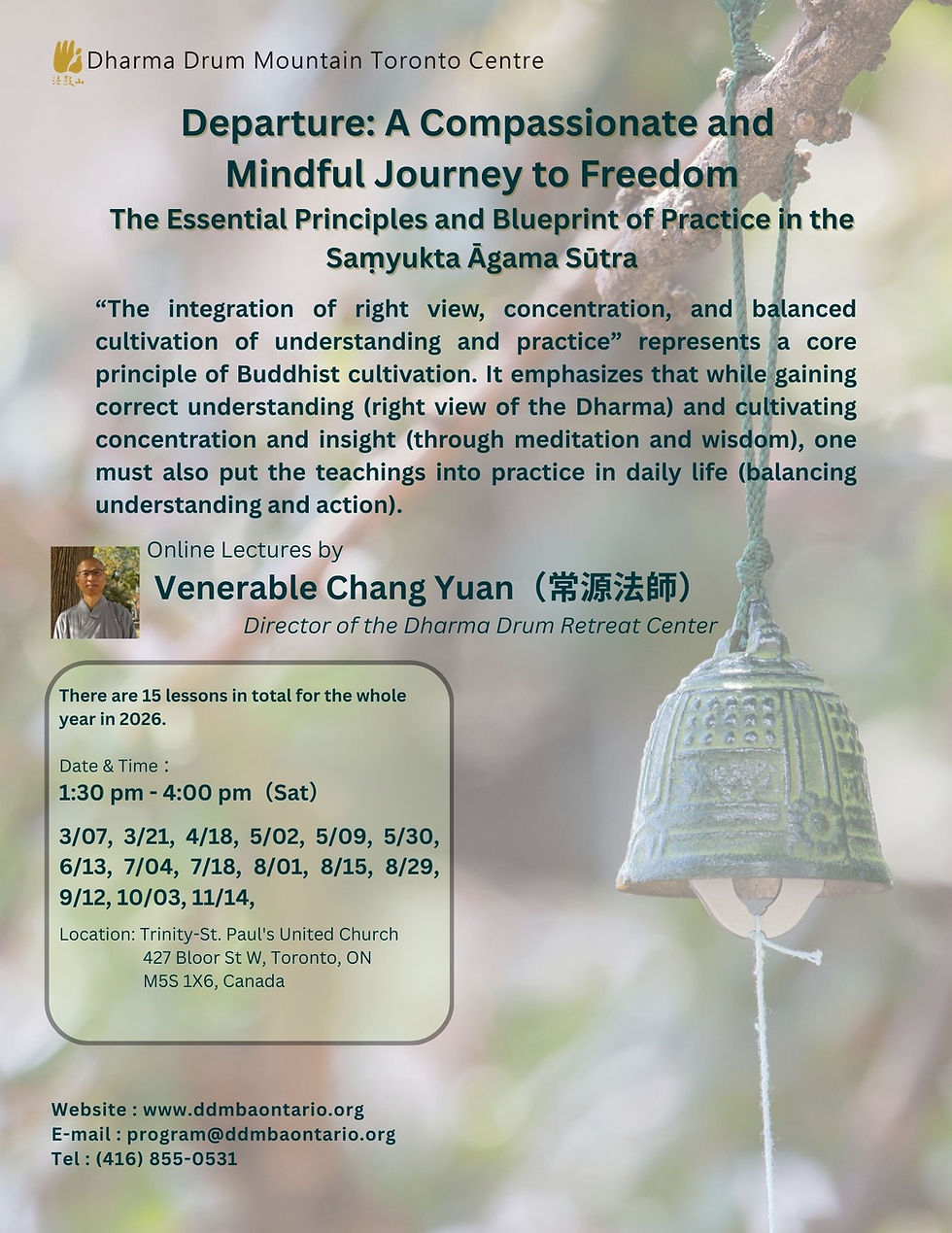top of page
Upcoming Events









 Five Lectures on Learning BuddhismMultiple DatesSat, Feb 07Room Chapel, 427 Bloor St W, Toronto, ON M5S 1X6, Canada
Five Lectures on Learning BuddhismMultiple DatesSat, Feb 07Room Chapel, 427 Bloor St W, Toronto, ON M5S 1X6, Canada
 Departure: A Compassionate and Mindful Journey to FreedomMultiple DatesSat, Mar 07427 Bloor St W, Toronto, ON M5S 1X6, Canada
Departure: A Compassionate and Mindful Journey to FreedomMultiple DatesSat, Mar 07427 Bloor St W, Toronto, ON M5S 1X6, Canada
BUDDHIST STUDY
Learning of the Buddhist doctrines
Buddhism Courses
Courses about the Buddhist doctrine
Dharma Talks
Lectures relating to the Chan practices and its application in daily life
Dharma Study
Sharing of the dharma application in daily life

Frequently Asked Questions
Frequently asked questions
bottom of page
